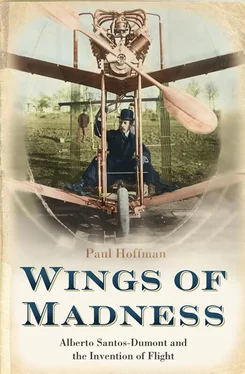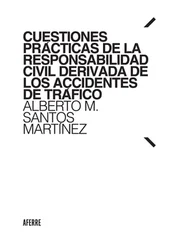But other clerics continued the armchair exercise. In 1755, Joseph Galien, a Dominican friar and theologian at the papal university in Avignon, proposed collecting rarefied air from the upper reaches of the atmosphere and enclosing it in a mile-long vessel that would be capable of lifting fifty-four times the weight carried by Noah’s ark. Galien never explained how he planned to reach the upper atmosphere in the first place, and his supervisor at the divinity school implored him to take a long respite from clerical duties and, on his return, to restrict his speculation to theology not technology.
Such chimerical schemes for ballooning were abandoned once the Montgolfiers showed how little there really was to it. On June 5, 1783, the two brothers demonstrated a thirty-foot-diameter unmanned balloon in the public square in Annonay. It required eight men to hold down the twenty-thousand-cubic-foot balloon, whose envelope consisted of pieces of silk lined with paper fastened together by buttons and buttonholes. When the Montgolfiers gave the signal, the men released the giant gasbag and it climbed six thousand feet. After ten minutes, it came down in a field a mile and a half away.
News of the accomplishment reached the Paris Academy of Sciences, whose members had been actively experimenting with the construction of a lighter-than-air balloon but had so far failed to get anything off the ground. The Parisian scientists, not wanting to be upstaged by unschooled papermakers, accelerated their efforts. The physicist-engineer Jacques Alexandre César Charles, assisted by two craftsmen, the brothers Ainé and Cadet Robert, substituted hydrogen gas for the burning-straw fumes, and on August 23, 1783, in the place des Victoires began inflating a twelve-foot-diameter silk balloon. The hydrogen was obtained by pouring five hundred pounds of sulfuric acid over one thousand pounds of iron filings. Charles had not counted on the chemical reaction to produce as much heat as it did, and the balloon fabric had to be repeatedly doused with cold water to keep it from singeing. The water vapor trapped in the balloon condensed and weighed it down.
The inflation took three days, and, as word spread of the spectacle, a crowd gathered, choking the neighboring streets. To ease the congestion, Charles ordered the balloon moved in the stealth of night, escorted by armed guards, to the more expansive Champ de Mars, at the foot of what is now the Eiffel Tower. Barthélemy Faujas de Saint-Fond witnessed the move:
No more wonderful scene could be imagined than the Balloon being thus conveyed, preceded by lighted torches, surrounded by a “cortege” and escorted by a detachment of foot and horse guards; the nocturnal march, the form and capacity of the body, carried with so much precaution; the silence that reigned, the unseasonable hour, all tended to give a singularity and mystery truly imposing to all those who were acquainted with the cause. The cab-drivers on the road were so astonished that they were impelled to stop their carriages, and to kneel humbly, hat in hand, whilst the procession was passing.
At 5:00 P.M. on August 27, Charles’s assistants triumphantly released the balloon and it rose rapidly to a height of three thousand feet. After forty-five minutes, it descended in a field in the village of Gonesse, fifteen miles from Paris.
Unlike the hot-air balloon, which could have been made at any time in recorded history, the hydrogen balloon could not have been invented much earlier than it was because the gas, initially called phlogiston, or “inflammable air,” was discovered only in 1766, by the English scientist Henry Cavendish. On learning that “inflammable air” was nine times lighter than ordinary air, Joseph Black in Edinburgh filled a small, thin bag with the new gas and watched it rise to the ceiling of his laboratory. He had difficulty, though, in scaling up the experiment. The problem was that the materials he tried for bags were either too heavy or too porous. At a large public lecture, he used the allantois of a calf as the gasbag, but was humiliated by its failure to ascend and gave up ballooning entirely. In 1782, Tiberius Cavallo, a fellow of London’s Royal Society, “found that bladders, even when carefully scraped, are too heavy, and that China paper is permeable to the gas.” Charles succeeded because he had the idea of making the silk impermeable but still lightweight by varnishing it with a solution of elastic gum.
The Montgolfiers made the next move in the race to advance aerostation. On September 19, 1783, they repeated the Annonay experiment at Versailles for the benefit of Louis XVI, Marie Antoinette, and their court. According to one observer, the papermakers “had caused all the old shoes that could be collected to be brought here, and threw them into the damp straw that was burning, together with pieces of decomposed meat; for these are the substances which supply their gas. The King and the Queen came up to examine the machine, but the noxious smell thus produced obliged them to retreat at once.” French scientists found the demonstration particularly insulting because the two brothers had beaten them to the balloon’s invention while harboring incorrect notions about the cause of the ascension. The Montgolfiers attributed the “lifting power” to the lighter-than-air smoke generated from their patented combination of fetid meat and dirty shoes. In fact, the smoke particles were heavier than air and actually worked to counteract the balloon’s rise. The lift came not from the imprisoned smoke but the captured hot air, which was lighter than the cooler ambient air. Most of the observers did not care why the spectacular blue-and-gold balloon was aloft—they just marveled at the fact that it was. And the world’s first aerial travelers, a sheep, a rooster, and a duck, were suspended in a cage below the balloon. The animals emerged unscathed from their two-mile trip to the forest of Vaucresson, except for the rooster, whose right wing had suffered a nasty kick from the sheep.
Charles and the Montgolfiers independently told the king that on the next ascension they themselves would be the passengers, but his majesty forbade such valuable subjects from risking their lives. Instead he offered prisoners as the first pilots, proposing to set them free if they survived. But Charles ultimately convinced him that the first person aloft should be a man of science who could describe the voyage if he were fortunate enough to make it back. The honor went to Francis Pilâtre de Rozier, a distinguished member of the Academy of Sciences who was the superintendent of the king’s natural-history collection. On October 15, 1783, he ascended in a captive balloon (one tethered to the ground), the hot air replenished by the burning of straw and wood in an iron basket hung below the balloon. Having found it easy to stoke the fire when he was in the air, Pilâtre de Rozier and a companion, the Marquis d’Arlandes, went up in a free balloon for the first time on November 21. Ascending from the Bois de Boulogne at 1:54 P.M., they reached an elevation of five hundred to one thousand feet and, after twenty-five minutes, descended beyond the Paris city limits, some nine thousand yards from where they had started. Ten days later, Charles and Ainé Robert had the honor of being the first people to ascend in a hydrogen balloon, in a two-hour journey that began in the Tuileries and ended twenty-seven miles away in the town of Nesle.
Within a few months of Charles’s trip, the skies of Paris were populated with both hydrogen balloons, known as charlières , and montgolfières (hot-air balloons). Charlières were safer because they did not require an open flame, but montgolfières were more practical because hydrogen was expensive and scarce. “Balloonomania,” as historian Lee Kennett called it, was sweeping France: “The decade of the 1780s was in many ways a frivolous and jaded age, and it took the new ‘aerostatic machines’ to its heart. Ascensions became as fashionable as costume balls, and so numerous that the Paris city authorities had to issue an ordinance governing their use—the world’s first air traffic regulations. The distinctive form of the balloon lent itself to objects as diverse as chair backs and snuff boxes.”
Читать дальше












